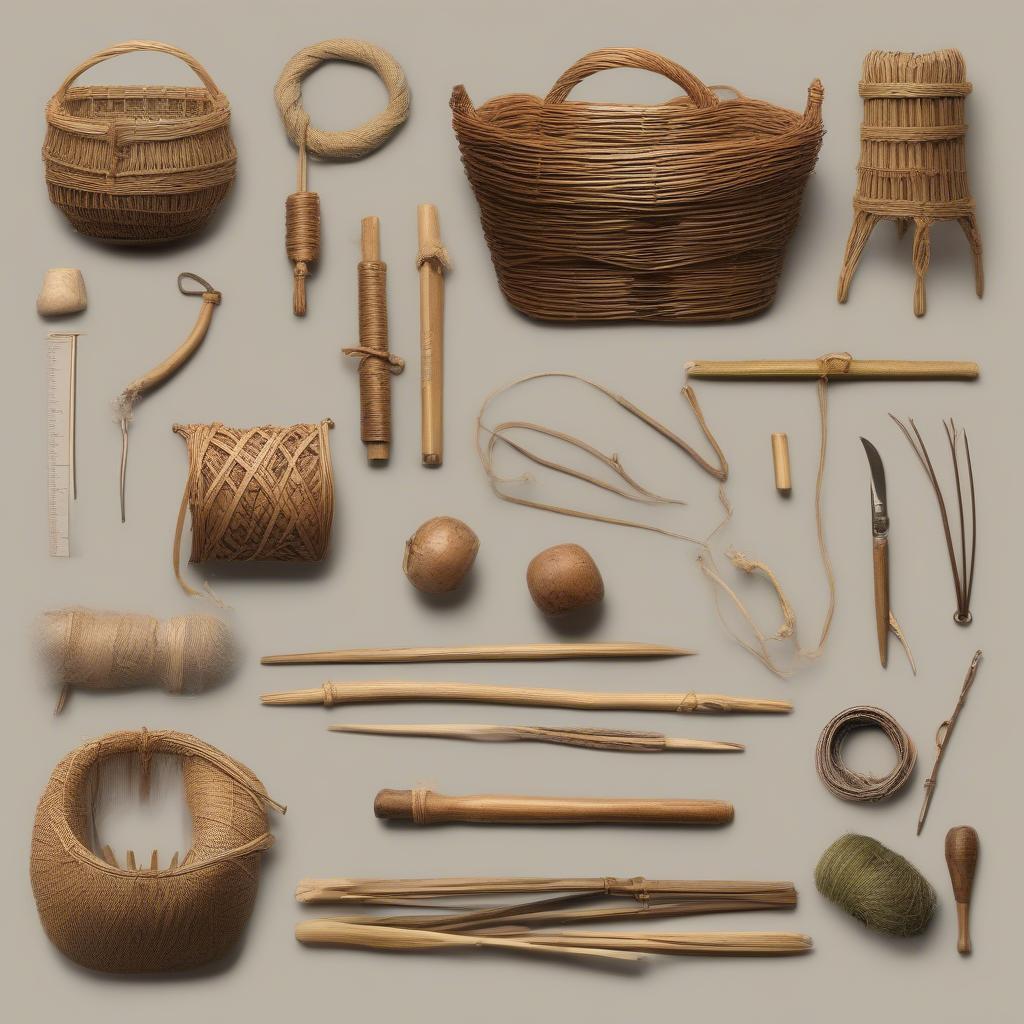Basket Weaving
Other Terms for Basket Weaving in Medieval Times
Basket weaving, a crucial craft in medieval times, wasn’t always referred to by that name. Understanding the various terms used to describe this practice offers a fascinating glimpse into the daily lives and language of people centuries ago. This article explores the different terms used for basket weaving during the medieval period, shedding light on the historical context and evolution of this timeless craft.
Unraveling the Terminology of Basket Making in the Middle Ages
During the medieval period, basket making was essential for daily life, used for storage, transportation, and even defense. While the modern term “basket weaving” is commonly used today, people in the Middle Ages employed a variety of terms to describe this craft, reflecting regional dialects and the specific materials used. These terms offer valuable insights into the historical and cultural significance of basketry during that era.
What Did They Call Basket Weaving in Medieval Times?
Several terms were used interchangeably or to describe specific types of basketry. Let’s explore some of the most common:
- Wickerwork/Wyckerwork: This term, derived from the Scandinavian word “vikja” (to bend), often referred to baskets made from pliable materials like willow or osier.
- Osierwork: Specifically referring to baskets crafted from osier, a type of willow, this term highlights the importance of this material in medieval basketry.
- Splintwork: This denoted baskets made from thin strips of wood, often oak or ash, showcasing the resourcefulness of medieval craftspeople.
- Basketmaking/Basket-making: While less common than other terms, variations of “basket making” did exist, demonstrating the continuity of the craft’s terminology.
Regional Variations and Specialized Terminology
The language used to describe basket weaving also varied regionally. In some areas, terms derived from local dialects or specific materials prevailed. For example, in areas where rushes were commonly used, terms like “rushwork” or “rush-weaving” might have been used.
The Significance of Materials and Techniques
The specific materials and techniques used also influenced the terminology. For instance, “twining” or “plaiting” might have been used to describe specific weaving methods, while “coiling” described a different basket construction technique.
 Medieval Basket Making Materials and Tools
Medieval Basket Making Materials and Tools
Beyond Baskets: Other Woven Objects
Medieval craftspeople didn’t limit themselves to just baskets. They also created a variety of other woven objects using similar techniques, further enriching the terminology surrounding this craft:
- Hurdles: Woven fences or screens, often used for livestock enclosures or privacy.
- Creels: Woven containers, typically used for fishing or carrying small items.
- Skeps: Woven beehives, demonstrating the ingenuity of medieval beekeepers.
These diverse applications of weaving techniques highlight the importance of this skill in medieval society.
Expert Insights on Medieval Basketry Terminology
“The variety of terms used for basket weaving in the Middle Ages reflects the craft’s deep integration into everyday life,” says Dr. Eleanor Ainsworth, a historian specializing in medieval crafts. “These terms offer us valuable clues about regional variations, material usage, and the evolution of the craft itself.”
Conclusion
Understanding the Other Terms For Basket Weaving In Medieval Times provides a richer understanding of this essential craft. By exploring these terms, we gain insight into the lives, language, and ingenuity of the people who relied on woven objects for a multitude of purposes. From wickerwork to osierwork, the terminology of medieval basketry offers a fascinating glimpse into the past.
FAQs
-
What is the most common material used for basket weaving in medieval times? Willow and osier were commonly used due to their flexibility and abundance.
-
Besides baskets, what else was woven in medieval times? Other woven items included hurdles, creels, skeps, mats, and even furniture components.
-
Were there regional differences in basket weaving terminology? Yes, regional dialects and the prevalence of specific materials led to variations in terminology.
-
What can we learn from studying medieval basket weaving terms? These terms offer insights into the materials used, techniques employed, and the social and economic importance of the craft.
-
Where can I find more information about medieval crafts? You can explore museums, historical societies, and academic libraries for further research on medieval crafts.
-
What is the difference between wickerwork and osierwork? While both involve weaving, osierwork specifically refers to items made from osier, a type of willow, while wickerwork can encompass a broader range of pliable materials.
-
How durable were medieval baskets? Depending on the materials and techniques used, medieval baskets could be surprisingly durable, lasting for many years with proper care.
For further assistance, please contact us at Hanoi, Vietnam or Tech Avenue, Suite 12, San Francisco, CA 94105, USA. We have a 24/7 customer service team available to help.
